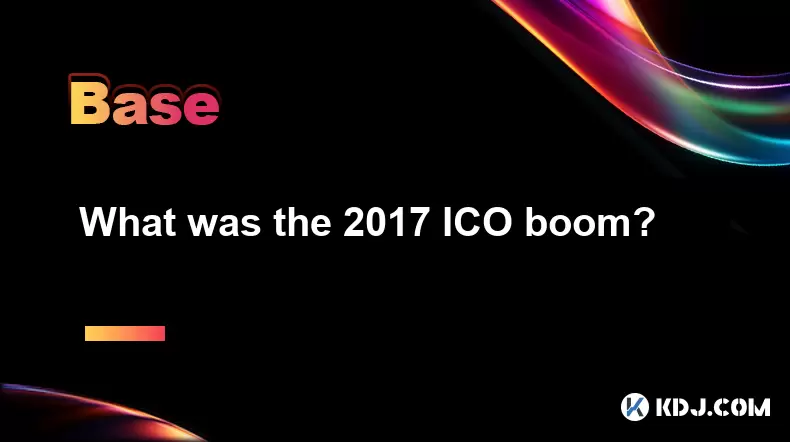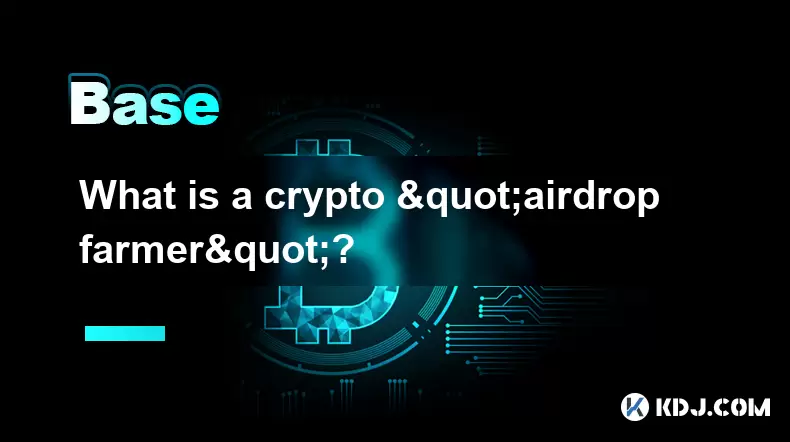-
 Bitcoin
Bitcoin $115100
-2.99% -
 Ethereum
Ethereum $3642
-1.38% -
 XRP
XRP $3.027
-5.51% -
 Tether USDt
Tether USDt $1.000
-0.05% -
 BNB
BNB $763.4
-1.32% -
 Solana
Solana $177.2
-5.42% -
 USDC
USDC $0.9999
-0.02% -
 Dogecoin
Dogecoin $0.2247
-6.47% -
 TRON
TRON $0.3135
0.23% -
 Cardano
Cardano $0.7824
-4.46% -
 Hyperliquid
Hyperliquid $42.53
-0.97% -
 Stellar
Stellar $0.4096
-6.09% -
 Sui
Sui $3.662
-2.61% -
 Chainlink
Chainlink $17.63
-3.57% -
 Bitcoin Cash
Bitcoin Cash $536.3
2.94% -
 Hedera
Hedera $0.2450
0.34% -
 Avalanche
Avalanche $23.23
-3.15% -
 Litecoin
Litecoin $112.2
-1.23% -
 UNUS SED LEO
UNUS SED LEO $8.976
-0.30% -
 Shiba Inu
Shiba Inu $0.00001341
-2.72% -
 Toncoin
Toncoin $3.101
-2.44% -
 Ethena USDe
Ethena USDe $1.001
-0.05% -
 Uniswap
Uniswap $10.08
-1.97% -
 Polkadot
Polkadot $3.938
-2.77% -
 Monero
Monero $323.9
0.87% -
 Dai
Dai $0.9999
-0.02% -
 Bitget Token
Bitget Token $4.481
-1.69% -
 Pepe
Pepe $0.00001199
-5.94% -
 Aave
Aave $288.2
-0.68% -
 Cronos
Cronos $0.1279
0.36%
What was the 2017 ICO boom?
The 2017 ICO boom revolutionized fundraising by allowing blockchain projects to raise billions globally through token sales, fueled by speculation, Ethereum's infrastructure, and minimal regulation.
Jul 24, 2025 at 10:21 am

What Was the 2017 ICO Boom?
The 2017 ICO boom refers to the rapid rise and widespread adoption of Initial Coin Offerings (ICOs) as a fundraising mechanism for blockchain-based projects. During this period, startups and developers leveraged blockchain technology to issue their own digital tokens in exchange for funding, primarily in Bitcoin or Ethereum. This phenomenon was not only a financial revolution but also marked a shift in how new ventures could raise capital without relying on traditional venture capital or bank loans.
ICOs became a popular alternative because they allowed projects to raise funds globally without intermediaries. Anyone with internet access could participate, leading to a surge in both investment and speculation.
How Did ICOs Work in 2017?
An ICO operates similarly to an Initial Public Offering (IPO), but instead of issuing shares, a company or project team issues digital tokens. These tokens could represent a utility within the project's ecosystem or function as a form of investment.
- A project team would publish a whitepaper outlining the goals, technology, tokenomics, and use of funds.
- Interested investors would send cryptocurrencies like Ethereum (ETH) to a designated wallet address.
- In return, they would receive the project's native tokens at a predetermined exchange rate.
- These tokens could later be traded on cryptocurrency exchanges if the project gained traction.
Smart contracts on the Ethereum blockchain automated the token distribution process, making it efficient and transparent. This automation was a major factor in the scalability of ICOs during the boom.
Why Did the ICO Boom Happen in 2017?
Several factors contributed to the explosive growth of ICOs in 2017:
- Rise of Ethereum: Ethereum's programmable blockchain enabled developers to create and deploy tokens using standards like ERC-20, making ICOs technically feasible and easy to implement.
- High Returns from Early ICOs: Projects like Ethereum itself, Golem, and Basic Attention Token (BAT) delivered massive returns to early investors, fueling interest.
- Lack of Regulation: At the time, regulatory oversight was minimal, allowing many projects to launch without scrutiny.
- Global Participation: Anyone with internet access could participate, removing geographic and institutional barriers.
- FOMO (Fear of Missing Out): As more people saw others making profits, the fear of missing out drove speculative investment.
The combination of these factors created a perfect storm for the ICO boom to take off in 2017. It was a time when even obscure whitepapers could raise millions overnight.
Which Were the Most Successful ICOs of 2017?
Some of the most notable ICOs launched in 2017 include:
- Ethereum: Although Ethereum launched its ICO in 2014, its continued growth and the rise of ERC-20 tokens in 2017 made it the backbone of the ICO ecosystem.
- Tezos: Raised over $232 million through its ICO, making it one of the largest at the time.
- Filecoin: Generated over $257 million, setting a record for the highest amount raised in an ICO during that year.
- Status (SNT): Raised $40 million and became a major player in the decentralized communication space.
- Bancor: Raised $153 million in just a few hours, showcasing the speed at which funds could be collected.
These projects demonstrated the potential of blockchain-based fundraising and attracted global attention. Their success stories further fueled the boom.
What Were the Risks and Scams During the 2017 ICO Boom?
While the 2017 ICO boom was revolutionary, it also brought significant risks:
- Scams and Fraud: Many fraudulent projects raised millions and disappeared without delivering on their promises.
- Lack of Accountability: Since ICOs were largely unregulated, there was little recourse for investors who lost funds.
- Token Value Collapse: Many tokens lost value rapidly after the initial hype, leaving investors with worthless assets.
- Regulatory Backlash: As the boom progressed, regulators began to take notice, leading to increased scrutiny and legal actions.
Investors often relied on trust and hype rather than due diligence, which led to significant losses for many. The lack of transparency and oversight made the ICO space a wild west of digital finance.
How Did the Market React to the 2017 ICO Boom?
The cryptocurrency market responded with extreme volatility during and after the 2017 ICO boom:
- Massive Inflows of Capital: Billions of dollars flowed into the crypto market, pushing Bitcoin and Ethereum to all-time highs.
- Increased Exchange Listings: Many ICO tokens were listed on exchanges, further increasing trading volume and speculation.
- Media Hype: Mainstream media coverage intensified, drawing in retail investors who were unfamiliar with blockchain technology.
- Market Correction: By early 2018, the market began to correct, leading to a prolonged bear market for many cryptocurrencies.
The boom was followed by a bust, leaving many investors with losses and prompting a reevaluation of the ICO model. It marked the end of an era of unregulated fundraising.
Frequently Asked Questions
Q: Were all ICOs in 2017 scams?
A: No, while many ICOs turned out to be fraudulent or failed to deliver, several legitimate projects emerged from the 2017 boom. Projects like Filecoin, Tezos, and Status are examples of successful ICOs that continued development post-fundraising.
Q: How did regulators respond to the 2017 ICO boom?
A: Regulators, particularly in the United States, began scrutinizing ICOs under securities law. The SEC classified many tokens as securities, requiring compliance with federal regulations, which significantly slowed down the ICO trend.
Q: Can anyone still launch an ICO today?
A: While ICOs are still technically possible, they have largely been replaced by other fundraising models like IEOs (Initial Exchange Offerings) and IDO (Initial DEX Offerings). Regulatory requirements and market conditions have made ICOs less attractive compared to earlier years.
Q: What is the difference between an ICO and an IPO?
A: An IPO (Initial Public Offering) involves selling shares of a company to the public, granting ownership stakes. An ICO (Initial Coin Offering) involves issuing digital tokens, which may or may not grant ownership or utility within a blockchain project.
Disclaimer:info@kdj.com
The information provided is not trading advice. kdj.com does not assume any responsibility for any investments made based on the information provided in this article. Cryptocurrencies are highly volatile and it is highly recommended that you invest with caution after thorough research!
If you believe that the content used on this website infringes your copyright, please contact us immediately (info@kdj.com) and we will delete it promptly.
- Bitcoin Swift (BTC3): Last Call for Presale Stage 1!
- 2025-07-25 23:10:12
- Kiyosaki's Crypto Playbook: Ditching Paper for Real Assets Like Bitcoin
- 2025-07-25 22:30:11
- Satoshi-Era Whales Stir the Bitcoin Pot: What's the Deal?
- 2025-07-25 22:30:12
- Pi Coin Value in Indian Rupees (INR) 2024: Decoding the Hype
- 2025-07-25 21:45:50
- Crypto Investing: Top Picks and Meme Coin Mania in '25
- 2025-07-25 21:52:07
- Ark Invest's Portfolio Rebalance: Coinbase, Block, and the Crypto Shift
- 2025-07-25 21:52:07
Related knowledge

What is the difference between CeFi and DeFi?
Jul 22,2025 at 12:28am
Understanding CeFi and DeFiIn the world of cryptocurrency, CeFi (Centralized Finance) and DeFi (Decentralized Finance) represent two distinct financia...

How to qualify for potential crypto airdrops?
Jul 23,2025 at 06:49am
Understanding What Crypto Airdrops AreCrypto airdrops refer to the distribution of free tokens or coins to a large number of wallet addresses, often u...

What is a crypto "airdrop farmer"?
Jul 24,2025 at 10:22pm
Understanding the Role of a Crypto 'Airdrop Farmer'A crypto 'airdrop farmer' refers to an individual who actively participates in cryptocurrency airdr...

What is the difference between a sidechain and a Layer 2?
Jul 20,2025 at 11:35pm
Understanding the Concept of SidechainsA sidechain is a separate blockchain that runs parallel to the main blockchain, typically the mainnet of a cryp...

What is the Inter-Blockchain Communication Protocol (IBC)?
Jul 19,2025 at 10:43am
Understanding the Inter-Blockchain Communication Protocol (IBC)The Inter-Blockchain Communication Protocol (IBC) is a cross-chain communication protoc...

How does sharding improve scalability?
Jul 20,2025 at 01:21am
Understanding Sharding in BlockchainSharding is a database partitioning technique that is increasingly being adopted in blockchain technology to enhan...

What is the difference between CeFi and DeFi?
Jul 22,2025 at 12:28am
Understanding CeFi and DeFiIn the world of cryptocurrency, CeFi (Centralized Finance) and DeFi (Decentralized Finance) represent two distinct financia...

How to qualify for potential crypto airdrops?
Jul 23,2025 at 06:49am
Understanding What Crypto Airdrops AreCrypto airdrops refer to the distribution of free tokens or coins to a large number of wallet addresses, often u...

What is a crypto "airdrop farmer"?
Jul 24,2025 at 10:22pm
Understanding the Role of a Crypto 'Airdrop Farmer'A crypto 'airdrop farmer' refers to an individual who actively participates in cryptocurrency airdr...

What is the difference between a sidechain and a Layer 2?
Jul 20,2025 at 11:35pm
Understanding the Concept of SidechainsA sidechain is a separate blockchain that runs parallel to the main blockchain, typically the mainnet of a cryp...

What is the Inter-Blockchain Communication Protocol (IBC)?
Jul 19,2025 at 10:43am
Understanding the Inter-Blockchain Communication Protocol (IBC)The Inter-Blockchain Communication Protocol (IBC) is a cross-chain communication protoc...

How does sharding improve scalability?
Jul 20,2025 at 01:21am
Understanding Sharding in BlockchainSharding is a database partitioning technique that is increasingly being adopted in blockchain technology to enhan...
See all articles

























































































